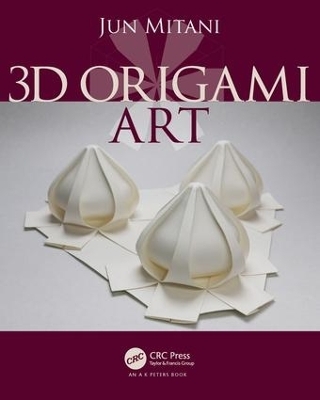
3D Origami Art
Seiten
2016
Productivity Press (Verlag)
978-1-4987-6534-3 (ISBN)
Productivity Press (Verlag)
978-1-4987-6534-3 (ISBN)
Easily Create Origami with Curved Folds and Surfaces
Origami—making shapes only through folding—reveals a fascinating area of geometry woven with a variety of representations. The world of origami has progressed dramatically since the advent of computer programs to perform the necessary computations for origami design.
3D Origami Art presents the design methods underlying 3D creations derived from computation. It includes numerous photos and design drawings called crease patterns, which are available for download on the author’s website. Through the book’s clear figures and descriptions, readers can easily create geometric 3D structures out of a set of lines and curves drawn on a 2D plane.
The author uses various shapes of sheets such as rectangles and regular polygons, instead of square paper, to create the origami. Many of the origami creations have a 3D structure composed of curved surfaces, and some of them have complicated forms. However, the background theory underlying all the creations is very simple. The author shows how different origami forms are designed from a common theory.
Origami—making shapes only through folding—reveals a fascinating area of geometry woven with a variety of representations. The world of origami has progressed dramatically since the advent of computer programs to perform the necessary computations for origami design.
3D Origami Art presents the design methods underlying 3D creations derived from computation. It includes numerous photos and design drawings called crease patterns, which are available for download on the author’s website. Through the book’s clear figures and descriptions, readers can easily create geometric 3D structures out of a set of lines and curves drawn on a 2D plane.
The author uses various shapes of sheets such as rectangles and regular polygons, instead of square paper, to create the origami. Many of the origami creations have a 3D structure composed of curved surfaces, and some of them have complicated forms. However, the background theory underlying all the creations is very simple. The author shows how different origami forms are designed from a common theory.
Jun Mitani is a professor of information and systems in the Faculty of Engineering at the University of Tsukuba. Dr. Mitani was previously a PRESTO researcher at the Japan Science and Technology Agency, a lecturer in the Department of Computer Science at the University of Tsukuba, and a postdoctoral researcher at RIKEN. His research focuses on computer graphics, including computer-aided origami design techniques. He is the author of the books Spherical Origami and 3D Magic Origami.
Axisymmetric 3D Origami. Extension of Axisymmetric 3D Origami. Connecting Axisymmetric 3D Origami Shapes. Making Use of Mirror Inversion. Application of Mirror Inversion. Voronoi Origami. Various Origami Designs. Conclusion. Index.
| Erscheinungsdatum | 25.05.2016 |
|---|---|
| Reihe/Serie | AK Peters/CRC Recreational Mathematics Series |
| Zusatzinfo | 292 Illustrations, black and white |
| Verlagsort | Portland |
| Sprache | englisch |
| Maße | 203 x 254 mm |
| Gewicht | 294 g |
| Themenwelt | Sachbuch/Ratgeber ► Freizeit / Hobby ► Kreatives Gestalten |
| Mathematik / Informatik ► Mathematik ► Allgemeines / Lexika | |
| Mathematik / Informatik ► Mathematik ► Geometrie / Topologie | |
| ISBN-10 | 1-4987-6534-3 / 1498765343 |
| ISBN-13 | 978-1-4987-6534-3 / 9781498765343 |
| Zustand | Neuware |
| Haben Sie eine Frage zum Produkt? |
Mehr entdecken
aus dem Bereich
aus dem Bereich
schöpferische Auszeiten für einen freien Kopf, mehr Selbstliebe und …
Buch | Softcover (2023)
Frech (Verlag)
18,00 €


